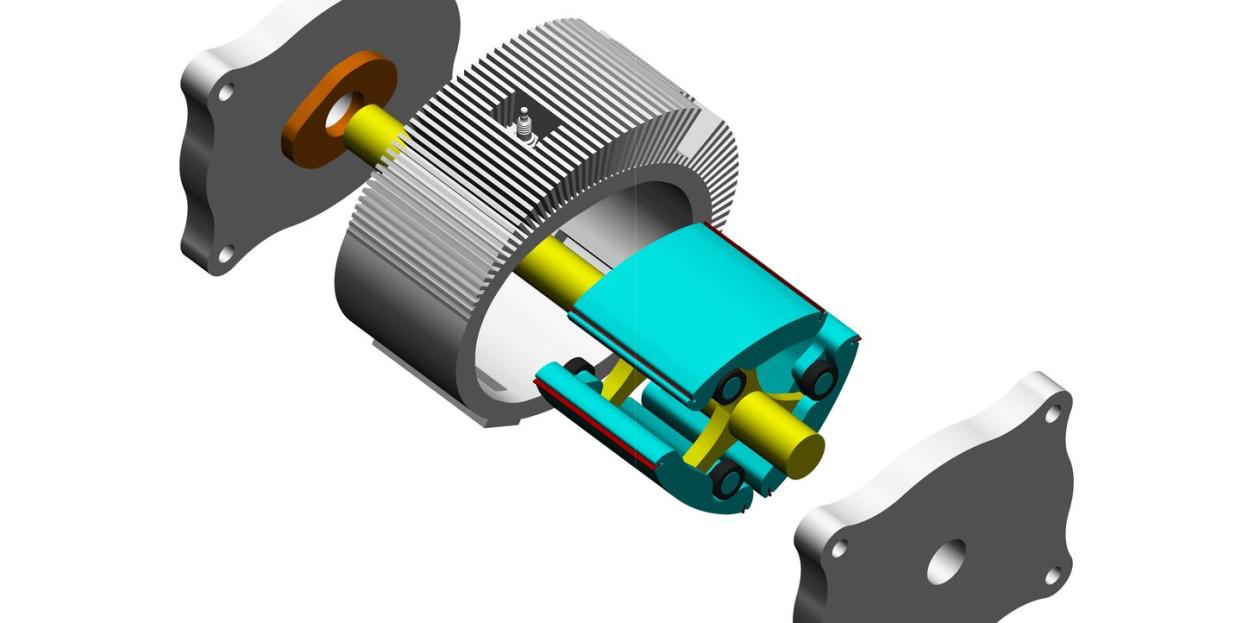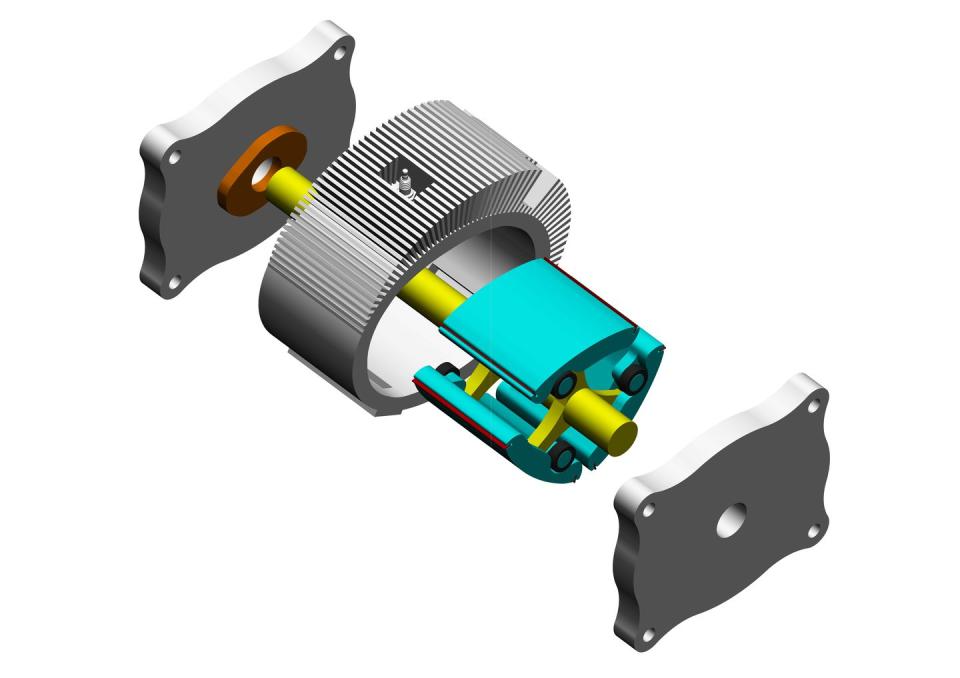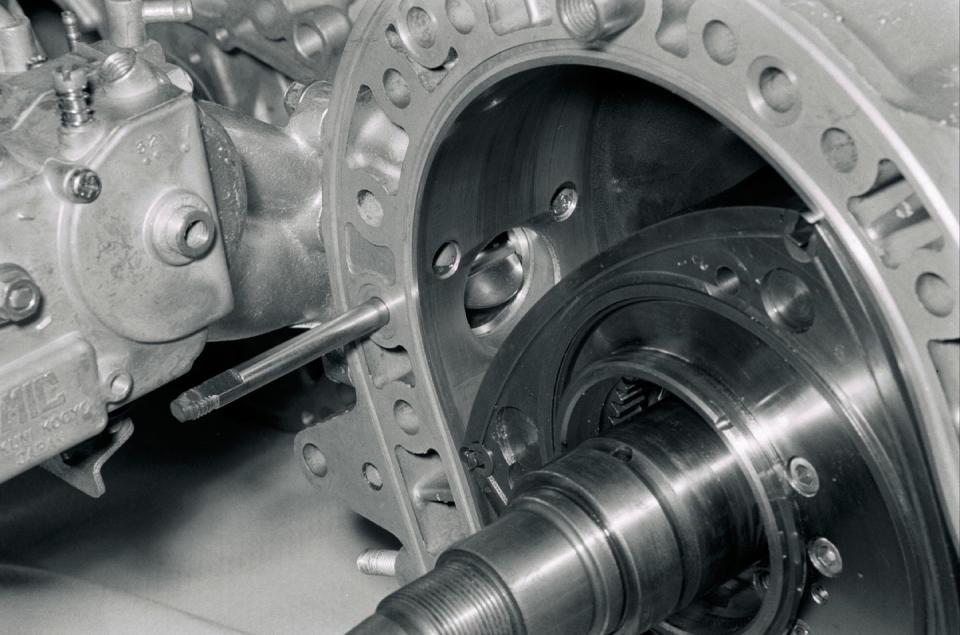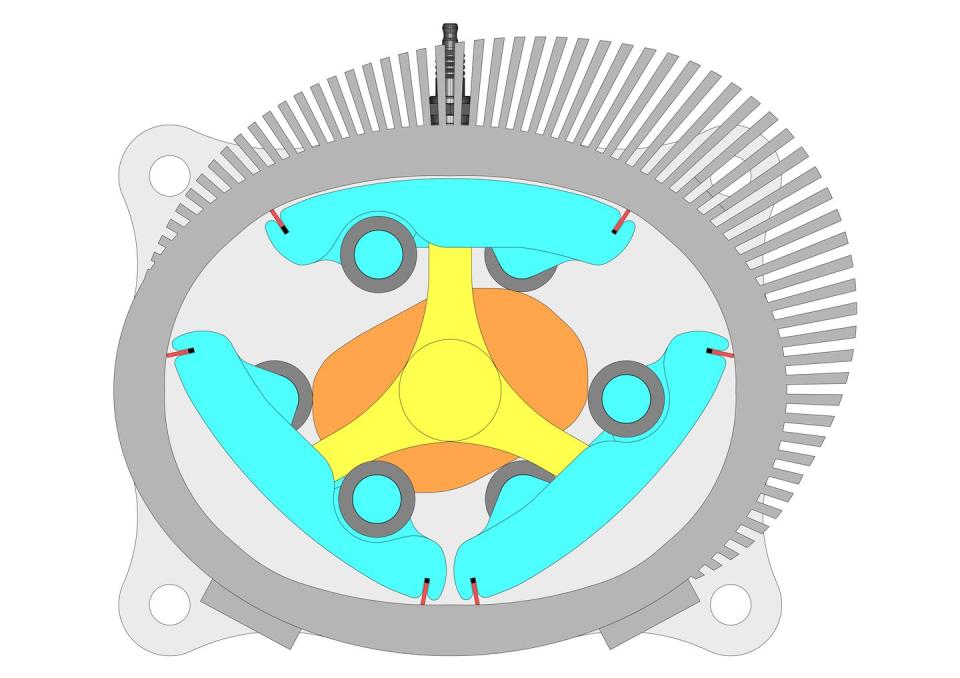The Rhombus Rotary Engine: Can a Quirky New Design Top the Famous Wankel?

Imagine triangles spinning around a shower curtain rod inside a beer keg-that is an elemental description of the screaming Wankel rotary engine. This powerplant is beloved by gearheads the world over because of its simple design with a minimum of moving parts, the way it runs smooth from low RPM to high, and the huge amounts of power that come from its tiny displacement.
However, the iconic triangular-rotor Wankel is rev-limited by the way its triangular rotors mount eccentrically to its crankshaft, meaning the engine is limited to about 9,000 RPM because the crankshaft would bend if it spun faster. Sure, a 9,000 RPM redline is high for a street car, but being able to rev higher could allow for greater power in other applications.
Maybe they could-if we went beyond the spinning triangles.

For more than a decade, Australian engineers working under the name Rotary Engine Development Agency have developed a new design of rotary engine that is based on a deforming rhombus rather than the conventional triangular rotors. The engine's main advantage is a greater power density than a Wankel can achieve because a more balanced design allows the motor to rev higher-so says Peter King, one of two partners at REDA.
The other main advantage King claims is that the Szorenyi's rev limit isn't constrained by the crankshaft bending that results from the Wankel's eccentric rotors. The Szorenyi's balanced rotors (in which the crankshaft that turns them is at the center of the rotor) allows it to rev higher than a Wankel, whose rotors have a center of gravity eccentric to its crankshaft.
This new rotary design is called the Szorenyi rotary, named after the inventor of the engine and partner at REDA, Peter Szorenyi. After he passed away in 2012, his son Adam took his place at REDA alongside King.

The Wankel was never the only rotary design, but it would become the signature type. Conceived in 1920s Germany, the Wankel finally reached production in the 1950s at German automaker NSU. Mazda, along with an enormous list of automotive and aircraft manufacturers and a couple of motorcycle makers, licensed the Wankel from NSU and developed their own versions. Only Mazda really went for it, using rotaries mostly famously in sports cars such as the RX-7 and grand tourers such as the Cosmo.
NSU went belly-up in the 1970s because its early Wankels kept self-destructing, and although the company worked out the kinks eventually, its reputation was shot to hell. Mazda was in the midst of converting almost all its production line to Wankels when the oil crisis of 1973 hit. From then on, the rotary was reserved mostly for niche lightweight sports cars and luxury grand tourers, until Mazda disappointed Wankel lovers everywhere by stopping production after 2012.
The Szorenyi endured its own saga. REDA had been developing a four-chamber Szorenyi for years and built a functioning prototype in 2008. But when the group published its white paper with the Society of Automotive Engineers in 2017, things hit a snag. Engineers from Ricardo, a British automotive engineering firm, reviewed the engine and told King the corner hinges would experience extreme pressure loads and would be difficult to adequately lubricate.
“As a result of that (conversation), I had an inspiration to remove the hinges and just accept the loss of one (combustion chamber),” King says. That simplified the engine and eliminated the lubrication and high-load problems, but also brought the Szorenyi back to a three-chamber rotary closer in concept to the Wankel.
The Szorenyi rotary retains the Wankel's basic features for the non-moving parts of the engine, however, it still has a key advantage-the Szorenyi uses a rounder shape for its stator (the beer keg-shaped stationary part of the engine). Its rotors experience centrifugal forces that deform them against the apex seals lining the combustion chambers, which improves the sealing of those chambers. By contrast, King argues, the Wankel's eccentric rotors experience a force acting toward the center of the engine, and that can cause the apex seal to lift, resulting in gases leaking between chambers.
Losing the fourth chamber reduces the displacement of the engine-if all else stays the same-but the three-chamber Szorenyi retains the balanced rotors that let it rev higher than an equivalent Wankel. “My approach now is to park the four-chamber engine and concentrate on the three-chamber engine,” King says. It'll be the first version of the Szorenyi that we'll see, although King doesn't say for which application it'll debut.

Presuming its final design comes to fruition, the Szorenyi faces an existential question: What is the rotary's place in the world?
Like the air-cooled engine, the rotary engine saw interest and production among big manufacturers peter out around the turn of the century. The Wankel survived until 2012, when Mazda killed the rotary-powered RX-8. Toughening emissions and fuel economy standards had signed the Wankel's death warrant.
Except it's experiencing a minor revival. Around the same time REDA decided to concentrate on the three-chamber Szorenyi, Mazda announced it would reviving the Wankel as a range extender for electrically driven cars. This way, the Mazda Wankel would not directly turn the wheels but act more like an onboard generator that, in a pinch, generates extra electricity for the electric motors that drive the car's wheels. Suddenly the rotary found yet another life.
The immediate fate of the Szorenyi remains unclear. As opposed to finding its way into a car-a long and arduous process-the design could be used first in unmanned aerial vehicles and light aircraft, places where the Wankel has been popular for years. The Szorenyi would be an ideal engine in ultralight aircraft and gyrocopters for the same reasons as the Wankel: good power, low weight, small size.
After all the positive reception from industry heavyweights such as the SAE and Ricardo, the only hurdle left is for REDA is to convince someone to build it.
('You Might Also Like',)

